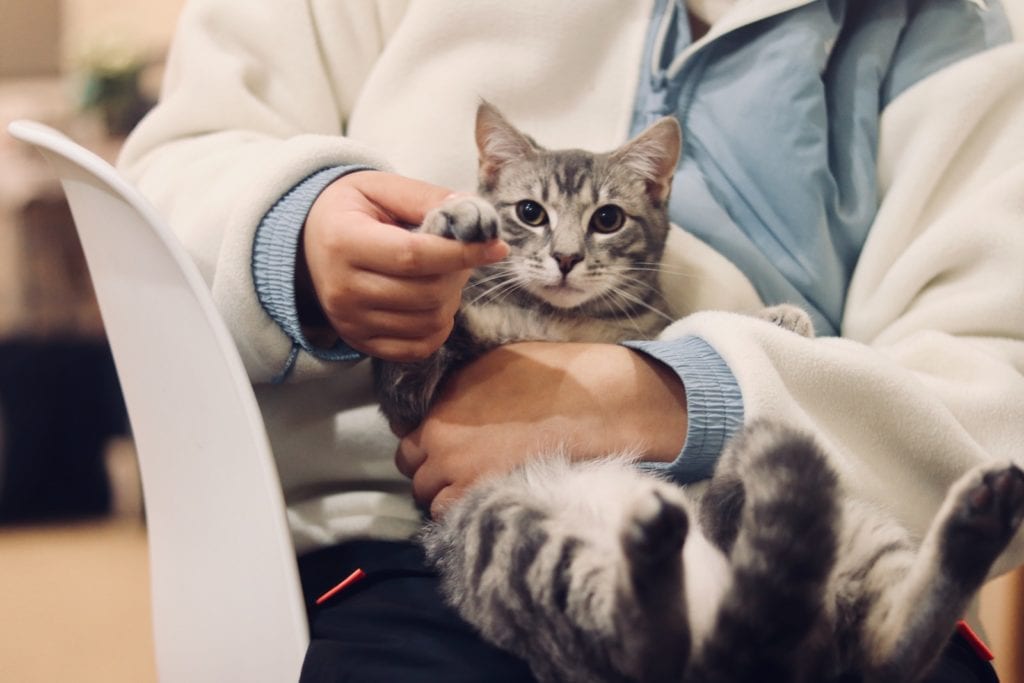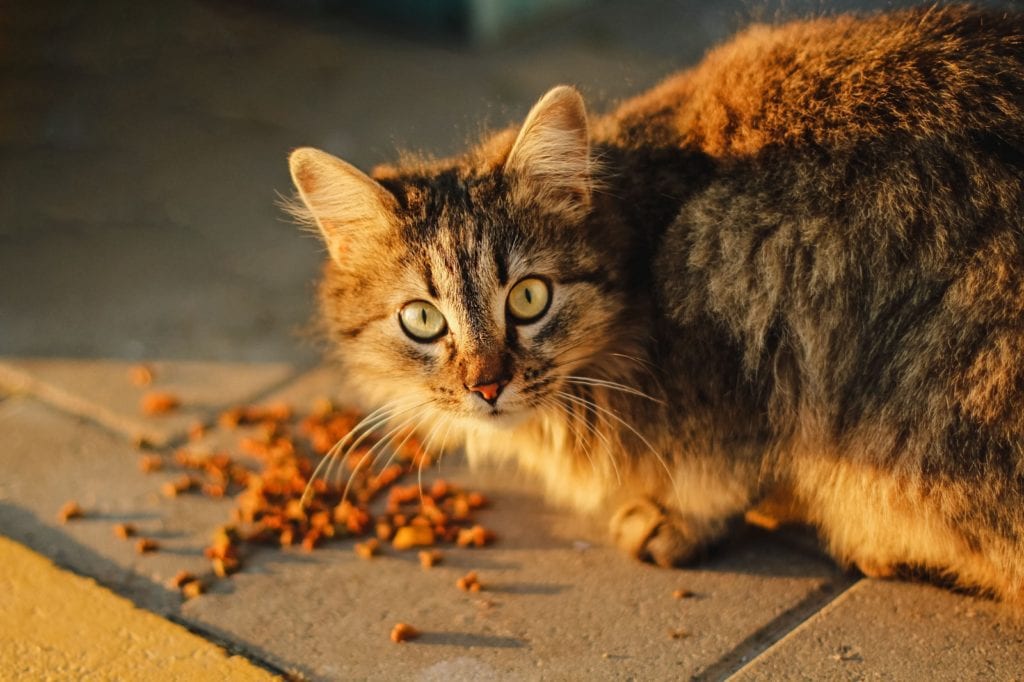Our advice isn’t intended to replace regular visits to your veterinarian—just to offer some practical ways to ensure that your pet remains in the best possible health throughout his or her life.
1. Spay or Neuter
SPAYING is the surgical removal of the uterus and ovaries from the abdomen of a female animal, resulting in permanent birth control.
NEUTERING is the surgical removal of the testicles of a male pet. Neutering a male animal is important because, while a female dog or cat can have only one litter at a time, male animals can impregnate many females every day.
Spay and neuter surgeries are performed under general anesthetic and your pet can usually return to normal activity within 24 to 72 hours. Removing the ovaries and uterus of a female dog or cat—helps prevent breast cancer and pyometra, or infection of the uterus, and stops the animal from going into heat. (Female cats, by the way, can go into heat every 3 weeks!)
Experts believe that many aggressive behavior problems can be avoided by neutering a male, or removing the testicles, by the age of six months. The surgery also prevents testicular cancer, prostate disease, and hernias.
Talk about preventive medicine!
One last note: pets should not gain weight after spaying or neutering as long as you provide them with good nutrition and regular exercise.
2. Vaccinate
When your pet was born, he received protection from many diseases from antibodies passed in his mother’s milk. These antibodies dissipated by the time he was about three months old, leaving his immune system vulnerable. That’s where you come in. It’s recommended that cats receive a three-in-one vaccine that protects against feline calicivirus, rhinotracheitis, and panleukopenia, as well as a rabies vaccination.
Ask your vet if vaccinations for feline leukemia, chlamydia, feline infectious peritonitis, and ringworm are recommended for your kitty. Dogs should receive a five-in-one vaccine against several infectious diseases, including distemper, leptospirosis, and parvovirus, as well as a rabies vaccination. Ask the vet if vaccinations for kennel cough and Lyme disease are recommended for your dog.
3. See Your Vet!

Photo by Werzk Luuu
You go to the doctor regularly—and so should your pet. Annual checkups give your veterinarian the chance to notice any developing illness and take care of it right away. Your vet will want to know about your pet’s behavior, eating, and exercise habits, and will check her temperature, pulse, and respiratory rate.
The doctor will also inspect her gums and teeth, heart and lungs, and assess the health of her internal organs. If it’s been a year or more since your pet has seen a vet, make that appointment today!
4. Fight Fleas

Cats especially are extremely sensitive to insecticides, and many pets die annually from improper use of flea control products. Ask your vet for a recommendation, and don’t forget—when fighting fleas, you’ll need to treat ALL the pets in the household, not just those who are obviously infested.
5. Prevent Heartworm

Photo by Matthew Henry
It’s difficult to treat and sometimes fatal, but heartworm infection is easily prevented. Your dog should be given a blood test for heartworm every year in the early spring, and your veterinarian may prescribe a preventive tablet to be given once a month throughout the mosquito season. (Some vets may recommend the medication year-round.)
Although dogs are natural hosts for heartworm, cats can also contract this disease, transmitted through the bite of an infected mosquito. Talk to your vet if you think your kitty is at risk.
6. Get Moving
Not only will daily exercise keep your pet physically fit and mentally healthy, but it also helps channel aggressive and destructive behavior. Regular activity also burns up calories and increases muscle mass and cardiovascular strength. When it comes to canines, individual exercise needs vary based on breed, sex, age, and level of health, but a couple of walks around the block every day is probably not enough—especially if your pooch is an adolescent or a member of the sporting, herding, hound or terrier breeds.
And if your cat has fallen into bad exercise habits (i.e. sure, she can run—to her food dish!), you will have to engage her in supervised fun and games. Always start slow, though, and limit beginning sessions to five minutes or so.
7. Battle the Bulge

Photo by Christine Knappe
Not enough exercise and too much food will cause any animal to gain weight—especially pets, who rely on you to regulate nutrition and activity levels. Excess flesh can cause health problems, including arthritis and liver and heart disease. Overweight pets face increased risk during surgery, and really fat cats can get a form of diabetes.
What’s the best way to tip the scales in your pet’s favor?
Gradually decrease her food intake while increasing her activity level. You can switch to a reduced-calorie food or make a cutback in the portion size of her regular food. We recommend a gradual reduction of 10 to 25 percent for cats and 25 to 33 percent for dogs—but it’s always a good idea to check with your pet’s vet first.
8. Do a Weekly Health Check
Regular home checkups are a great way to nip potential health problems in the bud. Plus, they’re as easy as one, two, three:
1.) Check under your pet’s fur for lumps, bumps, flakes, or scabs.
2.) Check your pet’s ears and eyes for any signs of redness or discharge.
3.) Make note of any changes in her eating or drinking habits.
If something seems off, call the vet.
9. Memorize Our List of Foods to Avoid

Photo by Anna Kumpan
Experts urge you to avoid feeding the following foods to your pet: Alcoholic beverages, avocado, chocolate, coffee, fatty foods, macadamia nuts, moldy or spoiled foods, onions and onion powder, raisins and grapes, salt, yeast dough, garlic, and products sweetened with xylitol.
10. Don’t Forget Your Pet’s Teeth
Does your pet have morning breath—all day long? This is a major indicator that your pet is in need of dental care. Particles of food, saliva, and bacteria—what’s commonly called “plaque”—can build up on the teeth and gums and cause infection. If left untreated, the infection can result in tooth decay—and even move into the bloodstream and affect your pet’s heart, lungs, liver, kidneys, bones, and joints!
Check your animal companion’s teeth and gums at least once a week, and ask your vet how you can further prevent gum disease by regular brushing with a toothpaste formulated especially for your pet’s species.






Be the first to comment on "Top 10 Tips for a Lifetime of Good Health for Your Pet"